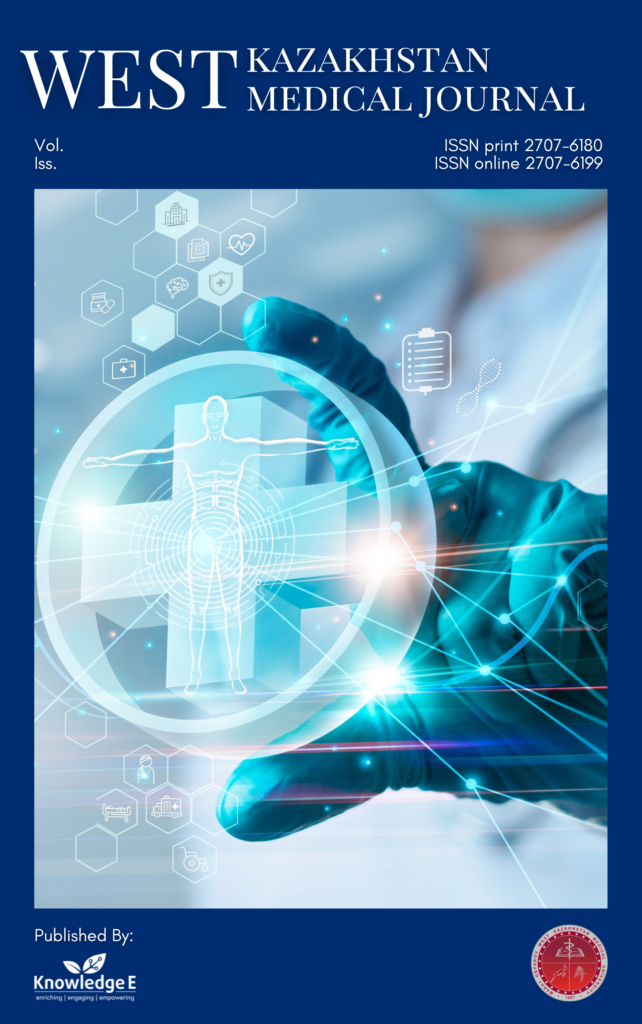
West Kazakhstan Medical Journal
ISSN: 2707-6180 (Print) 2707-6199 (Online)
Pioneering research advancing the frontiers of medical knowledge and healthcare practices.
Bridging the Gap: Enhancing Modern Anatomy Education Through Mental Rotation Training and 3D Technological Integration
Published date: Dec 21 2023
Journal Title: West Kazakhstan Medical Journal
Issue title: West Kazakhstan Medical Journal: Volume 65 Issue 4
Pages: 73 - 78
Authors:
Abstract:
Mental rotation is a crucial cognitive skill for understanding spatial relationships and three-dimensional aspects, especially in the study of anatomy. However, students with limited mental rotation abilities often face challenges when translating two-dimensional anatomical depictions into three-dimensional mental models. This article explores the impact of mental rotation skills on anatomy learning and proposes strategies to enhance these skills. It discusses the limitations of traditional and digital resources and introduces the concept of Stereoscopic 3D visualization technology (3DVT) and clay-based modeling (CBM) as effective teaching methods. Additionally, the article emphasizes the importance of pre-assessing students’ visual-spatial abilities and integrating a variety of teaching tools to create a comprehensive and enriched learning environment in anatomy education.
References:
[1] Lufler RS, Zumwalt AC, Romney CA, Hoagland TM. Effect of visual-spatial ability on medical students’ performance in a gross anatomy course. Anat Sci Educ. 2012;5(1):3- 9.
[2] Hoyek N, Collet C, Rastello O, Fargier P, Thiriet P, Guillot A. Enhancement of mental rotation abilities and its effect on anatomy learning. Teach Learn Med. 2009;21(3):201-6.
[3] Azer SA, Azer S. 3D anatomy models and impact on learning: a review of the quality of the literature. Health Prof Educ. 2016;2(2):80-98.
[4] Park S, Kim Y, Park S, Shin JA. The impacts of three-dimensional anatomical atlas on learning anatomy. Anat Cell Biol. 2019;52(1):76-81.
[5] Bogomolova K, Hierck BP, Looijen AEM, Pilon JNM, Putter H, Wainman B, et al. Stereoscopic three-dimensional visualisation technology in anatomy learning: A meta-analysis. Med Educ. 2021;55(3):317-27.
[6] Curlewis K, Leung B, Perera M, Bazira PJ, Sanders KA. Clay-Based Modeling in the Anatomist’s Toolkit: A Systematic Review. Anat Sci Educ. 2021;14(2):252-62.
[7] Hill JK. An historical analysis of and speculations about the value of clay working in American education: Teachers College, Columbia University; 1988.
[8] Khot Z, Quinlan K, Norman GR, Wainman B. The relative effectiveness of computer-based and traditional resources for education in anatomy. Anat Sci Educ. 2013;6(4):211-5.
[9] Preece D, Williams SB, Lam R, Weller R. “Let’s Get Physical”: Advantages of a physical model over 3D computer models and textbooks in learning imaging anatomy. Anat Sci Educ. 2013;6(4):216-24.